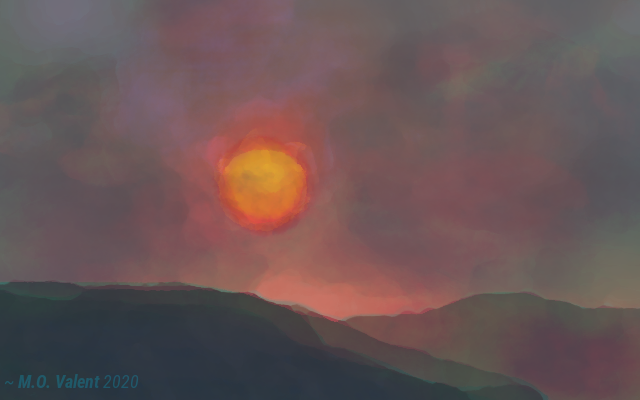NEOPROTEROZOIC ERA
PALEOPYRGIAN PERIOD
By the end of the Ectasian at 3690Myo, Paart had its first eukaryotes, a couple hundred species of rhizopods, diatoms, cilliates, and by the start of the Paleopyrgian, true algae.
By this time, land was dominated by a couple dozen species of fungi and bacteria that fed on the biologic material thrown upon land by storms and waves, those locations would often bear small towers of few centimeters tall, built with leftover material and minerals on the soil and decaying matter. Hence the name, "Ancient Towers".
Ice sheets covering the southern continental shelf would often break up and shed icebergs into the sea
The tightening of the gap between continents slowly decreased the amount of space available for stromatolite formation, though algae were still doing well - isolated ponds, insular regions and lakes that formed trapping algae, gave rise to variants that could thrive with less water (as the boreal continent started to trap megatons of ice, lowering the sea-level each year), some early moss-like plants were already starting to thrive on land by the start of a new ice age, the Mesofrigian.
NEOPYRGIAN PERIOD
The start of the Neopyrgian is marked by the appearance of fungi building over plant matter, with several taller structures being able to be constructed as the plants and previous generations of fungi broke up the rock and sand into soil, depositing nutrients.
It is also marked by the extinction of the stromatolite population due the ice age of the Mesofrigian Epoch.
Mesofrigian Epoch
The Mesofrigian was the time by which the continents united into the super-continent Sthalika, and fully closed it's insular regions, the mountain ranges by the southern regions deviated all warm wind into the north pole, bringing water vapour further north and increasing the planet's albedo with a polar icecap that extended over 26th parallel, this event lasted for almost 45 million years, reaching it's apex by 3740Myo.
Though this event killed the stromatolite population, the production of oxygen was able to continue far after this, but still with less efficiency - by the early plant life.
The southern ocean would cast several hypercanes and tsunamis over the equatorial part of the supercontinent
The dragging of the continental crust created large portions of shallow seas, in which the developing animal life could flourish, giving rise to the first marine invertebrates and arthropods.

















